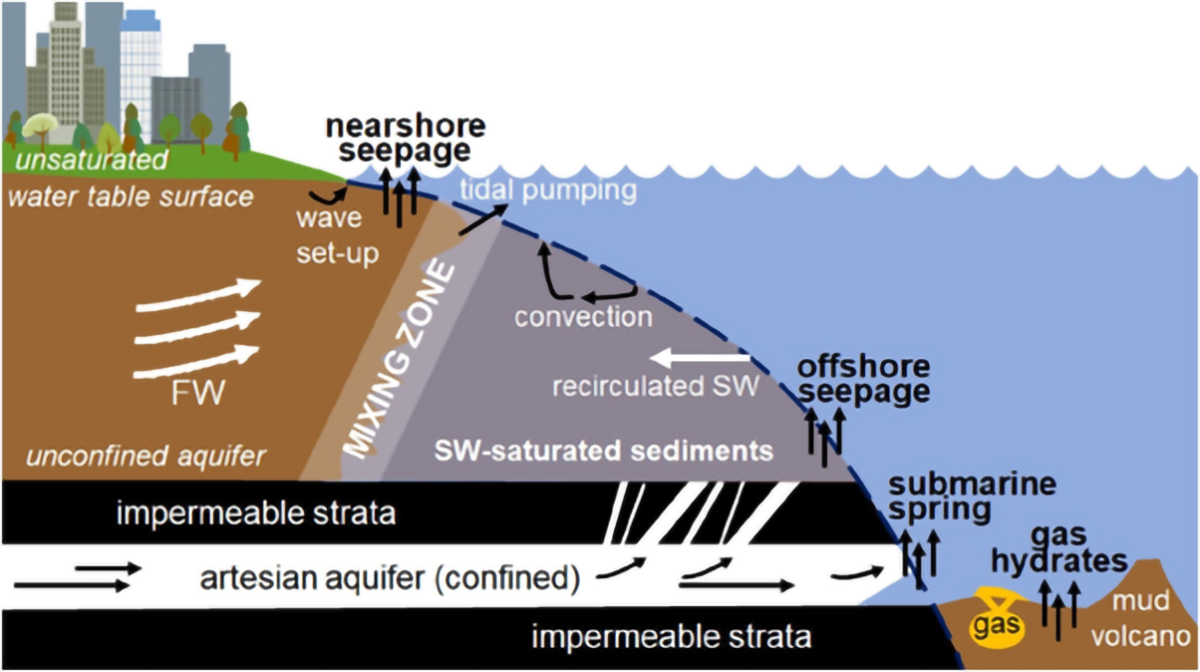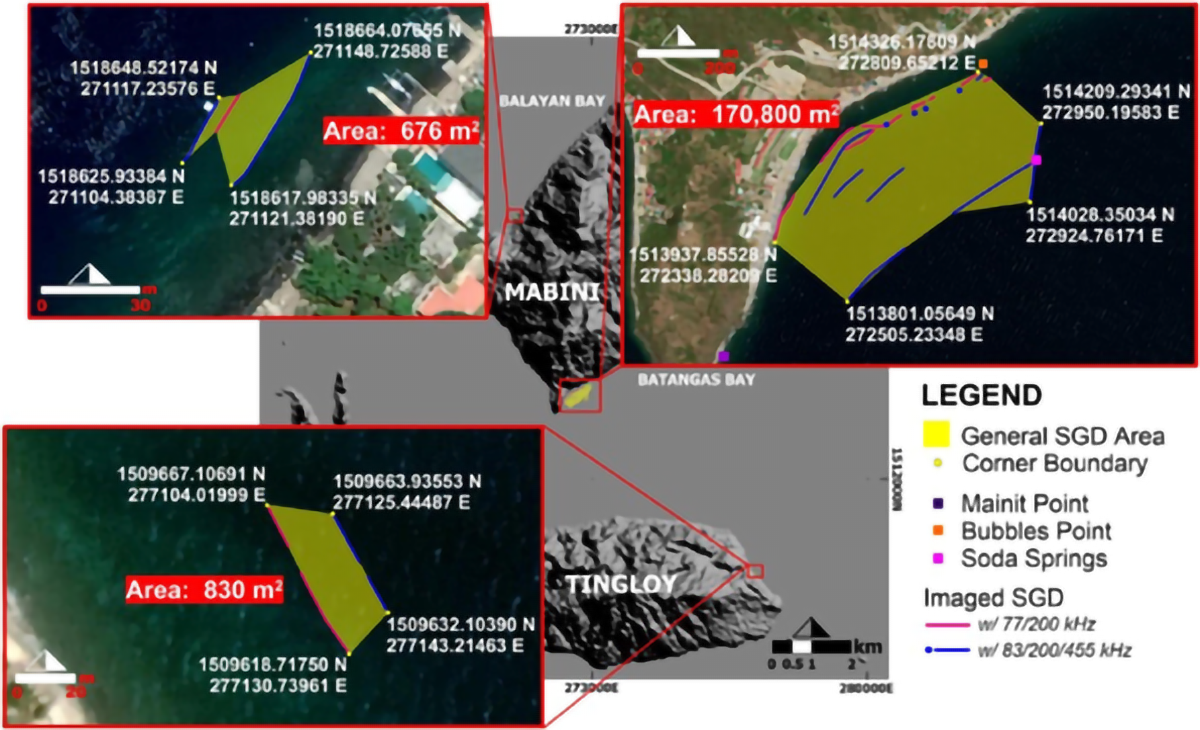Utility of low-cost recreational-grade echosounders in imaging and characterizing bubbly coastal submarine groundwater discharge
Summary
Despite the growing knowledge on the significance of submarine groundwater discharge (SGD), mapping its occurrence is a continuing challenge. This study explores the utility of low-cost, accessible, recreational-grade echosounders (RGESs) to image different types and identify specific locations of bubble-dominated coastal SGD. Standard and systematic methodologies for efficient imaging and processing were established. The use of RGES was validated using existing methodologies and materials – research-grade side scan sonar (RGSSS), continuous resistivity profiling, conductivity-temperature-depth casting, and MantaCam and SCUBA diving surveys. Lower frequencies (77/83 kHz; nearly the same as the effective resonance frequency of the bubbles) of RGESs showed more distinct acoustic signatures of bubbly SGD. The clusters of bubbly discharges have higher backscatter strength than the water column noise, resulting in the definitive and convenient manual detection of SGD features, showing more accurate point sources of SGD. Three types of known SGD occurrence were identified and characterized based on acoustic behavior and spatial distribution: 1) sparse, discrete and sporadic discharge over wide area, 2) curtain, high and continuous bubble concentrations from widespread discharge, and 3) spring, direct bubble discharge from intense seafloor degassing at a single point source. These results showed that RGES provides a good alternative for more efficient and cost-effective preliminary coastal SGD works.
Significance
Studies focusing only on mapping and characterizing submarine groundwater discharge (SGD) occurrence is scarce, despite the growing knowledge on its significance. This is mainly because currently utilized methods are tedious, costly, and mostly require site-specific assessments over a wide range of spatial scales and/or delicate geochemical procedures.
Use of sonar systems in detecting features similar to SGD occurrences was explored in recent years (Nakamura et al., 2015, Greinert, 2008, Hernández et al., 2017, McGinnis et al., 2006, Zhao et al., 2017), but there were no published materials looking at the utility of recreational-grade echosounder (RGES) in mapping and imaging SGD occurrences. In this study, the utility of RGES was evaluated and is assessed as a good tool for mapping bubbly coastal SGDs. Using the developed approach, the RGES successfully imaged, identified, and characterized nearshore and shallow-water bubbly SGDs, and their corresponding point sources in the three survey areas. Use of RGES may provide a faster and cost-efficient preliminary identification and mapping of sites with bubbly SGDs, narrowing down areas for further investigation. Availability of SGD maps may help in enhanced understanding of the phenomenon and its influence on the ecosystem.
Photos


Authors:
Mary Rose P. Gabuyo (Marine Science Institute, University of the Philippines)
Fernando P. Siringan (Marine Science Institute, University of the Philippines)
Read the full article: https://www.sciencedirect.com/science/article/pii/S2589915521000468?via%3Dihub
